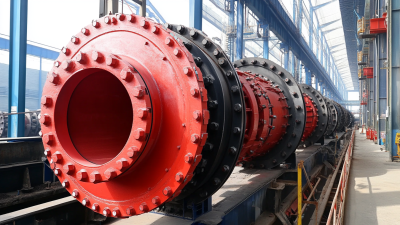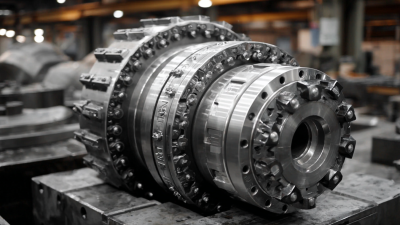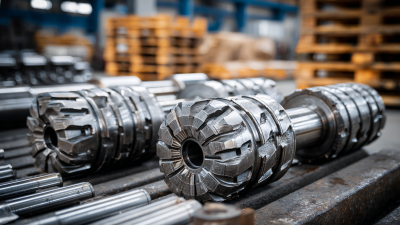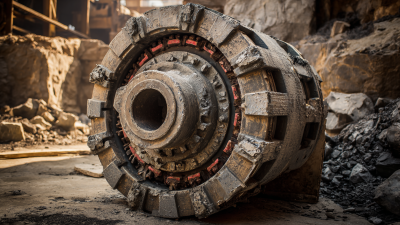
-
Home
-
About Us
-
Products
-
News
-
Blog
-
Contact Us
Leave Your Message

In the world of aggregate production and mining, optimizing the performance of a cone crusher is crucial for enhancing crushing efficiency and ensuring profitability. A key component in this optimization process is the Cone Crusher Bowl, which plays a significant role in delivering high-quality material and minimizing operational costs. As John Smith, a leading expert in the crushing industry, aptly put it, “The Cone Crusher Bowl is not just a part; it’s the heart of efficient crushing operations.”

Understanding the mechanics and functionalities of Cone Crusher Bowls is essential for professionals looking to enhance their operational standards. This article presents seven essential insights that illustrate how the design, material, and maintenance of these bowls impact overall performance. By delving into these critical aspects, operators can significantly improve the efficiency and longevity of their cone crushing systems, ultimately driving better results in competitive environments.
Cone crusher bowls are critical components that significantly influence crushing efficiency and performance. These bowls, typically made from high-performance alloy materials, enhance the wear resistance and durability of the crushing system. According to a report by the Mining Industry Research Organization, the proper selection of bowl material can extend operational lifespan by up to 40%, reducing maintenance costs and downtime significantly. Moreover, the design and shape of the bowl play a vital role in the distribution of forces during the crushing process, which directly impacts the quality of the final product.
Another key insight is the importance of bowl geometry in maximizing throughput. Research indicates that optimizing the bowl's profile can result in improved material flow and reduced energy consumption. A study by the International Journal of Mineral Processing showed that adjusting the bowl angle by just a few degrees could increase production rates by 15% while lowering operational costs. Additionally, regular monitoring and adjustment of the bowl position can prevent uneven wear and enhance the efficiency of the crushing operation, allowing for a more consistent output quality. These factors underscore the necessity for operators to focus on bowl specifications and maintenance practices to achieve optimal crushing efficiency.
| Insight | Description | Impact on Performance | Maintenance Tips |
|---|---|---|---|
| Bowl Shape | The geometry of the bowl affects the material flow and reduction ratio. | Optimized shape can enhance crushing efficiency by up to 15%. | Regularly check for wear and replace bowls showing significant erosion. |
| Material Composition | High alloy steel offers durability and resistance to wear. | Improved longevity reduces downtime and operational costs. | Inspect material integrity periodically to prevent unexpected failures. |
| Fitment Accuracy | Precision in fitting the bowl ensures optimal contact with the mantle. | Proper fitment can maximize crushing capacity and minimize energy loss. | Use alignment tools during installation to ensure correct fitment. |
| Cooling Efficiency | Adequate cooling mechanisms prevent overheating. | Maintains material properties and extends operational life. | Regularly check and maintain cooling systems for optimal performance. |
| Rim Design | Rim design influences the distribution of forces across the bowl. | Better design can lead to improved fragmentation of materials. | Review the rim frequently for cracks or deformations. |
| Lubrication | Proper lubrication reduces friction between moving parts. | Effective lubrication increases mechanical efficiency and reduces wear. | Establish a regular lubrication schedule based on usage intensity. |
| Adjustment Mechanism | Allows for dynamic adjustment of the crushing gap. | Enhances versatility in processing different material sizes. | Inspect mechanisms for functionality and adjust as necessary. |
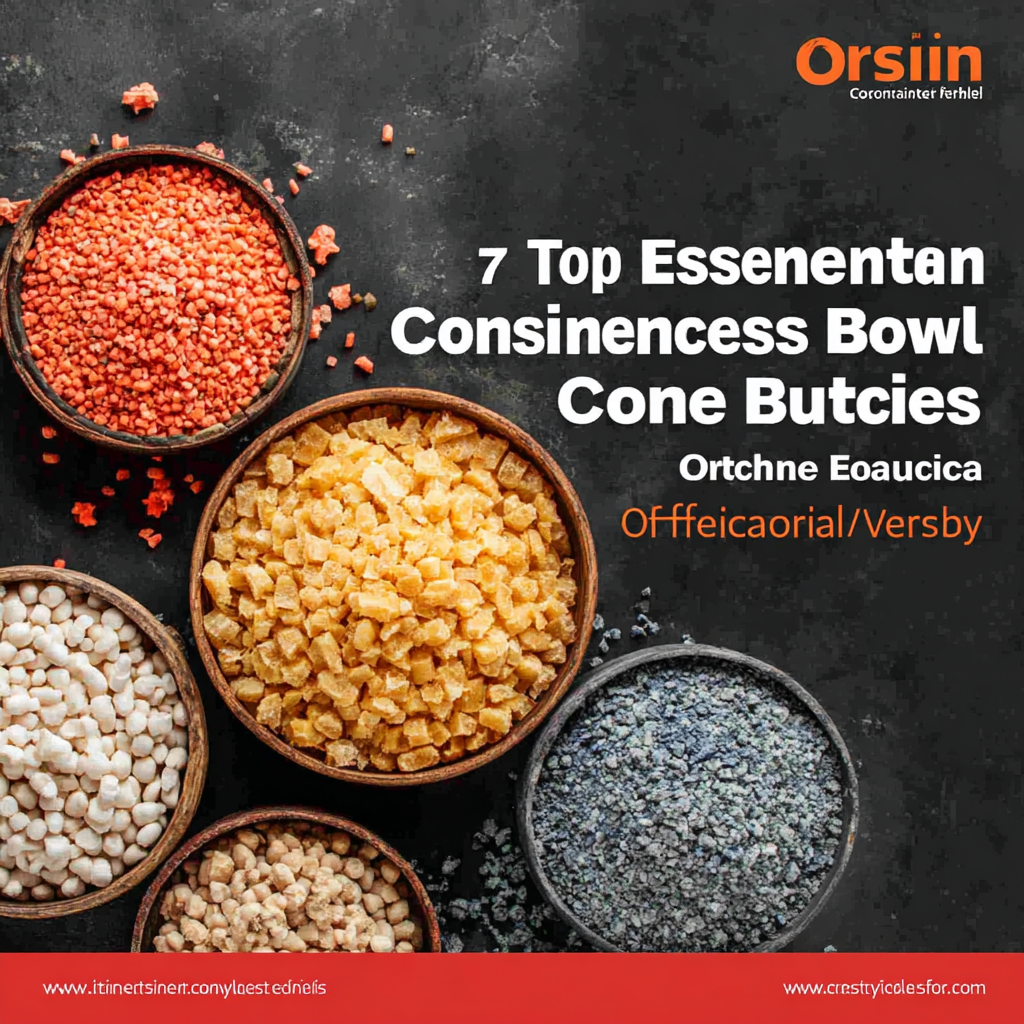 Cone crusher bowls play a crucial role in determining the efficiency and effectiveness of the crushing process. There are primarily two types of bowls commonly used in cone crushers: standard bowls and fine bowls.
Standard bowls are designed for primary crushing and are typically used in larger operations where the goal is to produce a more significant particle size. Their wider opening allows for better flow of material, making them ideal for handling larger rocks.
Cone crusher bowls play a crucial role in determining the efficiency and effectiveness of the crushing process. There are primarily two types of bowls commonly used in cone crushers: standard bowls and fine bowls.
Standard bowls are designed for primary crushing and are typically used in larger operations where the goal is to produce a more significant particle size. Their wider opening allows for better flow of material, making them ideal for handling larger rocks.
On the other hand, fine bowls are engineered for secondary and tertiary crushing, aimed at producing finer materials with more precise size specifications. These bowls have a narrower design, enhancing the crushing action and offering improved control over the final product size.
Understanding these differences is essential for operators to optimize their crushing circuits and achieve higher productivity. By selecting the appropriate bowl type based on the intended application, users can ensure optimal performance of their cone crushers and maximize their material processing efficiency.
The design of cone crusher bowls plays a crucial role in determining the efficiency of material flow and crushing operations. A well-designed bowl can greatly enhance the movement of material through the crushing chamber, ensuring that the feed is properly directed to the crushing zone. This optimizes the use of force exerted on the material, resulting in improved fragmentation and reducing the likelihood of blockage. Additionally, the geometry of the bowl, including its angle and depth, influences the crushing action, enabling better control over particle size distribution.
Moreover, bowl design affects wear patterns on both the bowl and the mantle. When these components are properly aligned and designed, they minimize uneven wear, thus prolonging the lifespan of the crusher parts. An efficient bowl will also facilitate quicker adjustments during operation, allowing for swift changes in crushing settings. This adaptability not only enhances productivity but also leads to reduced downtime, ensuring that the crushing process remains efficient throughout its operation. Consequently, investing in the right bowl design is pivotal for achieving optimal performance in cone crushers.
Proper maintenance of cone crusher bowls is crucial for optimizing crushing efficiency and prolonging their lifespan. Regular inspection of the bowl liner and the overall assembly is essential to identify wear patterns that could affect performance. Scheduled maintenance routines should include checking for signs of damage, wear, and misalignment.
Timely replacement of worn components can prevent costly breakdowns and ensure that the equipment operates at peak efficiency.
In addition to regular inspections, operators should pay attention to lubrication practices. Using the right type and amount of lubricant reduces friction and heat generation, which can weaken the material over time. Furthermore, maintaining correct operating conditions—such as ensuring that the feed material is consistent and avoiding overloading—will greatly enhance the longevity of the cone crusher bowls. By adhering to these maintenance practices, facilities can maximize the performance of their cone crushers while minimizing downtime and repair costs.
When it comes to optimizing the performance of cone crushers, understanding the bowl settings is crucial. These settings play a pivotal role in determining the output size and quality of crushed materials. According to a report by the Association of Equipment Manufacturers, proper bowl adjustment can enhance crushing efficiency by up to 30%. It ensures that the material passes smoothly through the crushing chamber, significantly reducing the potential for blockages and downtime.

Different materials possess unique characteristics that affect how they should be crushed. For instance, harder materials like granite may require tighter bowl settings to achieve a finer output, while softer materials such as limestone can be processed more efficiently with wider settings. A study published in the Journal of Industrial Technology highlights that adjustments based on material type and size can not only improve throughput but also prolong the lifespan of abrasive components by reducing excessive wear.
By carefully analyzing material properties and adjusting the bowl settings accordingly, operators can maximize their cone crushers' performance and achieve optimal crushing efficiency.
